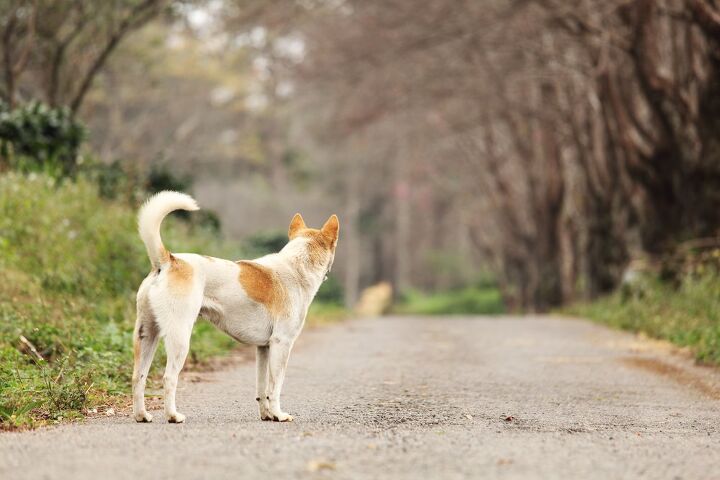What To Do If Your Dog Gets Lost

There is nothing worse than the feeling of your dog being lost – you have no idea where he is or if he is even safe. Many pet owners simply do not know what to do when their dog gets lost but your best chances of finding him come from action rather than inaction. This article will break down the steps you should take as soon as you realize that your dog is missing to ensure the greatest chance of recovering him safely.
File a Lost Pet Report
Your first step in recovering your pet should be to contact local animal shelters and animal control agencies. File a lost pet report with the agency and leave your contact information so that if someone brings the dog in or contacts the shelter about it, they know how to reach you. To make this step truly effective, contact all of the shelters within a 60-mile radius of your home and visit the shelters daily to see if your pet has been turned in. Be sure to put your dog’s info on social media. Nowadays, dogs are returned all the time because someone saw someone else’s post about a missing dog or a found dog and many a happy pet parent and pet have been reunited because of lost and found pet social media posts. Be prepared to prove that your dog is yours because responsible pet finders ensure that you’re not someone with nefarious plans for poor lost puppies and they’ll likely want to see pictures of you and the dog to prove he’ll go back to the right hands.
Search the Neighborhood
Your next step should be to look for your pet. Walk or drive around your neighborhood several times a day and ask your neighbors and other people in the neighborhood (like the mailman) if they have seen your dog. The more people you have looking for him, the greater your chances are of finding your dog. When you go looking, be sure to bring a recent photo and consider handing out copies along with your contact information in case anyone finds your dog. Consider having a bag of treats or something you know they’ll recognize and run to if they hear you.
Post Flyers with a Reward
In addition to looking for the dog yourself, you should hang posters and flyers in the area around your house with a recent photo of your dog as well as your contact information. If you really want people to pay attention to the flyer, you should also offer a reward of at least $100 for the recovery of your pet. Hang the flyers on utility poles or street signs in the area around your house as well as in public areas like grocery stores and gas stations.
Don’t Give Up Hope
If your dog isn’t used to being outside away from you, he is likely to be very nervous and scared – he may be hiding somewhere rather than wandering around. Do not give up hope that your dog will come out of hiding eventually and that someone will find him and return him to you. Keep checking your local shelters and continue searching the neighborhood. The chances are good that your dog will look for something familiar, so keep an eye out when you are walking or driving around. You should also keep an eye on your local newspaper or on social media networks in case anyone posts a lost and found notice about your dog.
Important Precautions to Take To Prevent Dog Loss
Losing your pet can be both traumatic and heartbreaking but there are many things you can do to prevent it from happening in the first place. The first step is to ensure that your dog has a good collar and ID tags that provide both your address and your phone number. You may also want to consider having your dog microchipped – this is a permanent form of identification that can be used in the event that your dog gets lost and does not have his ID tags. Most veterinarians and animal shelters are able to microchip your dog for around $30 – it is definitely worth the cost.
Another precaution you can take is a GPS tracker. Two popular GPS trackers are Tractive and Whistle. Not only do those trackers help you know exactly where your dog is at all times, they give fitness and health information too. Jiobit is a child tracker that’s moved into the pet tracking department since it works like the other trackers and can fit on your dog’s collar very easily too.
How To Help Children Deal With A Missing Pet
If your dog goes missing, your children are probably going to be upset about it. They’ll deal with it in different ways, but the basic gist is that a family member is missing and you all want him back.
To help children through the process, let them know that you ARE working on finding your furry family member and they can help. Have them make flyers (if old enough) or visit the neighbors to see if they’ve seen your missing pet. Let them sit with you as you’re making calls to shelters and vets to see if they’ve come across your pet.
Remember to give them some grace, as their behavior may out of joint because of their anxiety. Give them some grace as you work through these emotions together. Be honest about what’s going on and that sadly, your dog may not come home. Obviously, base your answers on the age of your child, but the truth will allow them to process what’s going on appropriately. Try and stay calm for their sake (but also for yours) to help ease anxiety and project positivity.
The most important thing you can do for your dog when he gets lost is to keep looking. Do not give up hope after a day or two or even after a week – you do not know the circumstances your dog is facing and he could simply be in hiding. Keep actively searching for your dog and use every resource available to you to get the word out so anyone who finds him can return him to you. There are stories on top of stories of pets reunited years later. And while that’s not necessarily the best-case scenario, there’s always hope.

Kate Barrington is the loving owner of two cats (Bagel and Munchkin) and a noisy herd of guinea pigs. Having grown up with golden retrievers, Kate has a great deal of experience with dogs but labels herself a lover of all pets. Having received a Bachelor's degree in English, Kate has combined her love for pets and her passion for writing to create her own freelance writing business, specializing in the pet niche.
More by Kate Barrington























